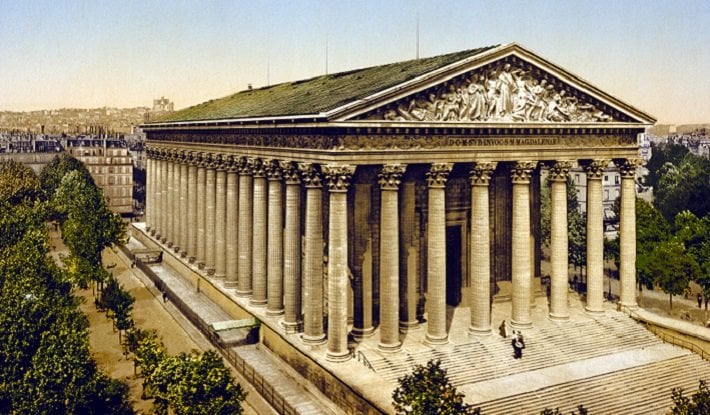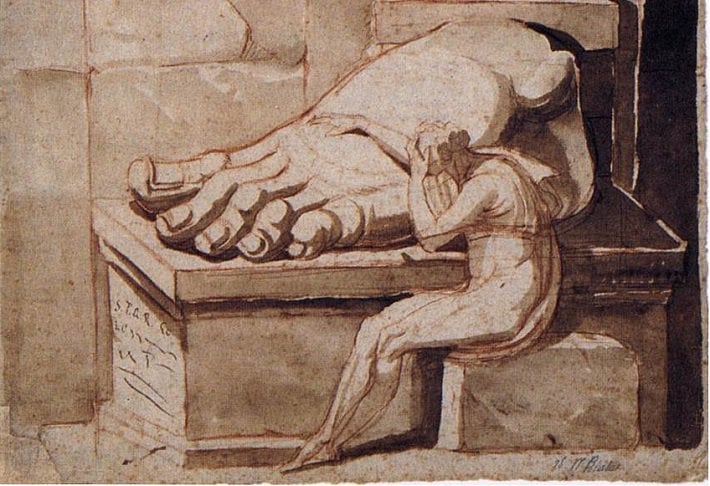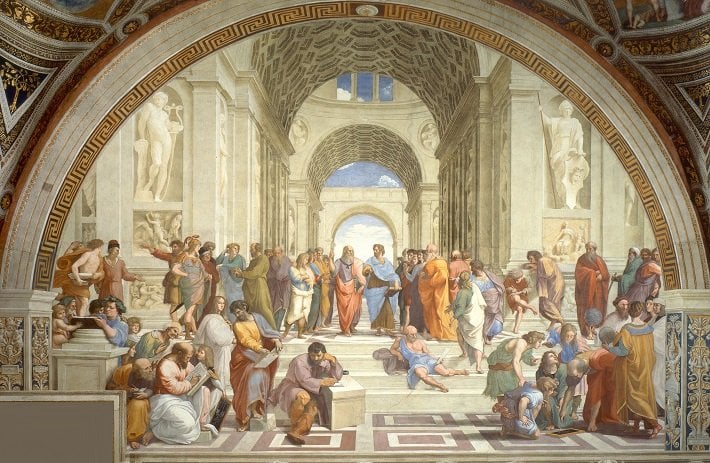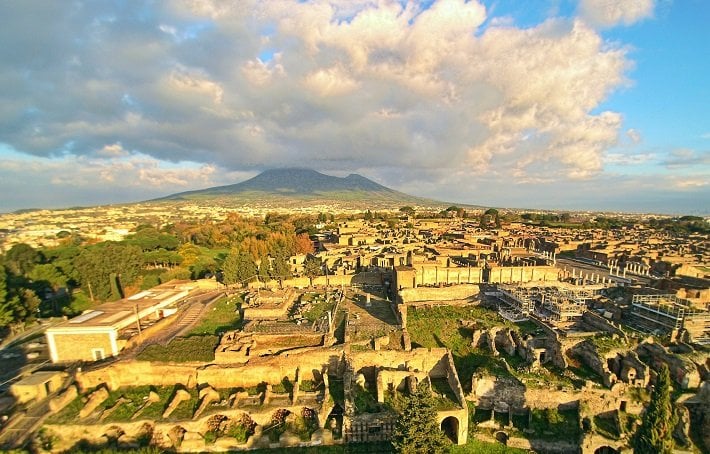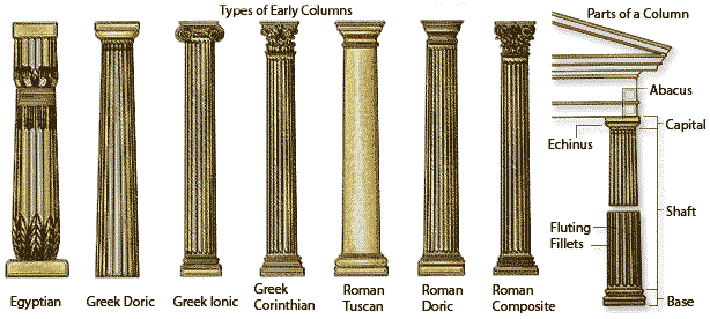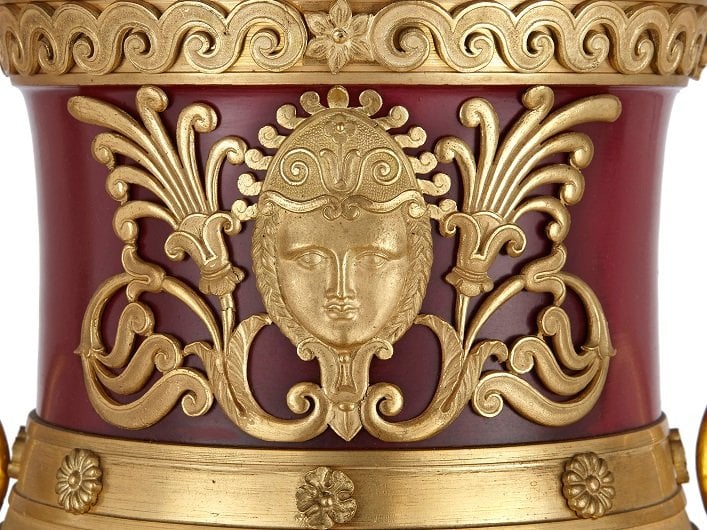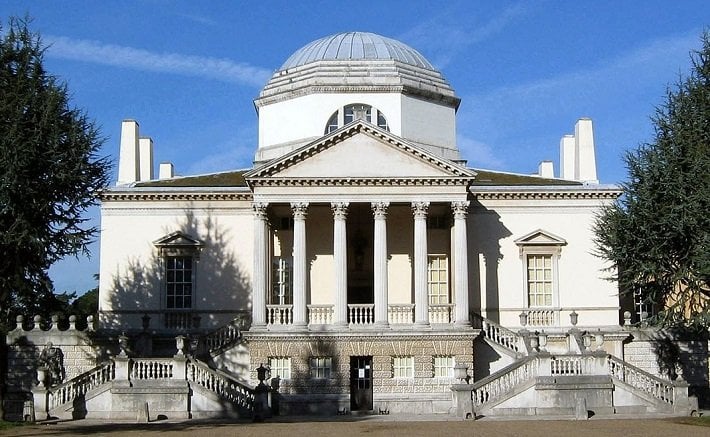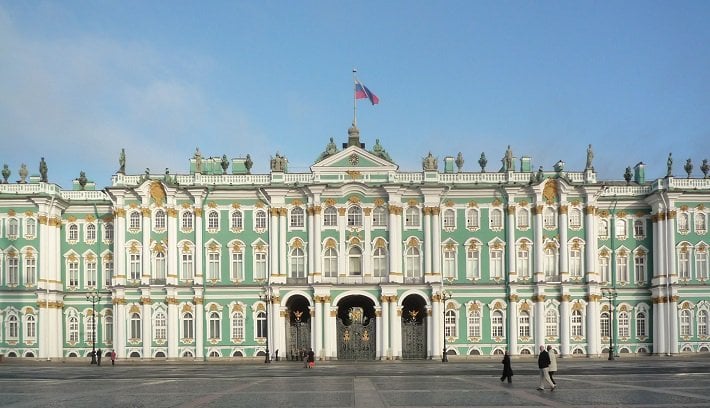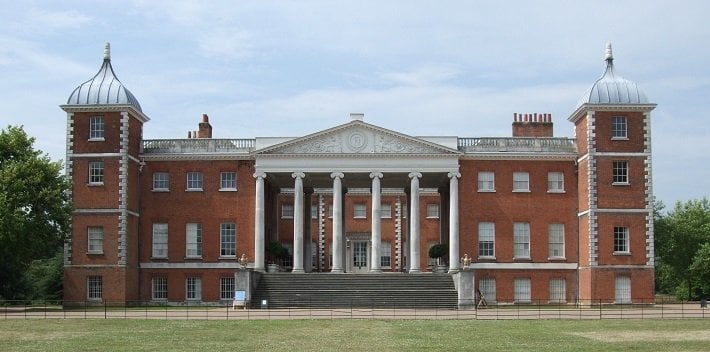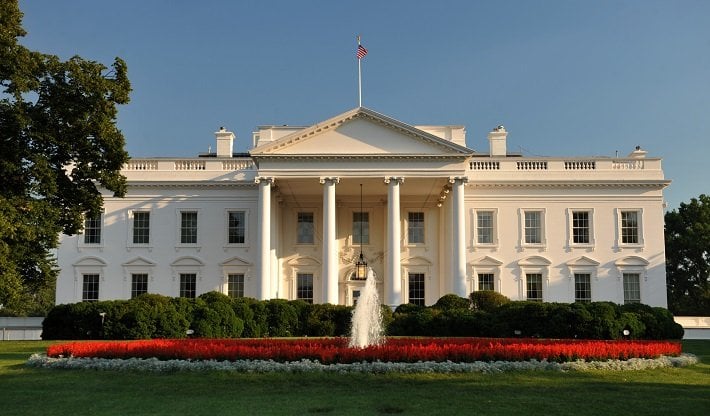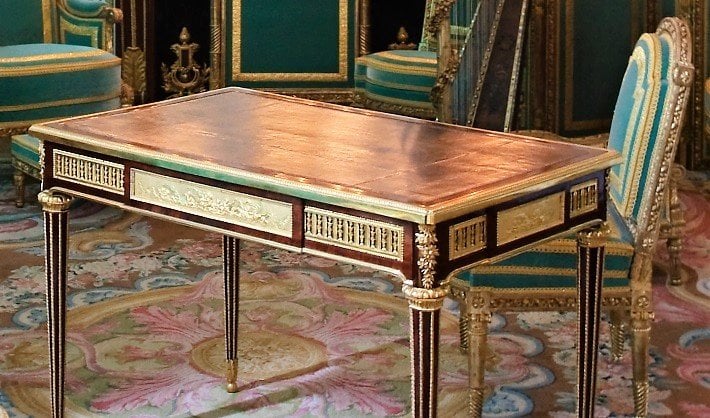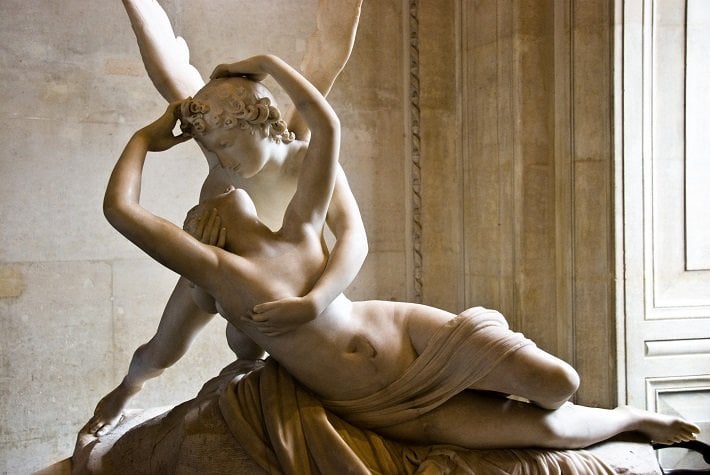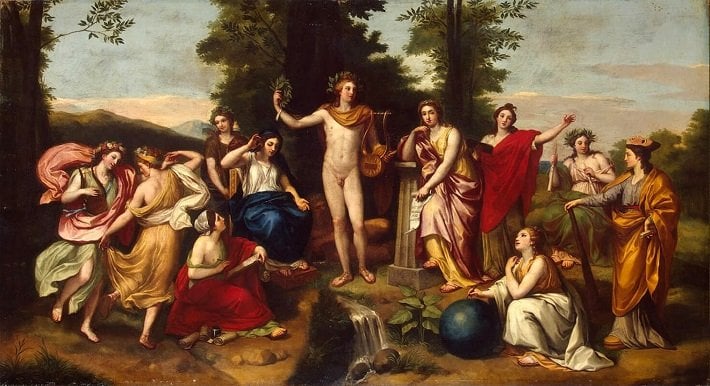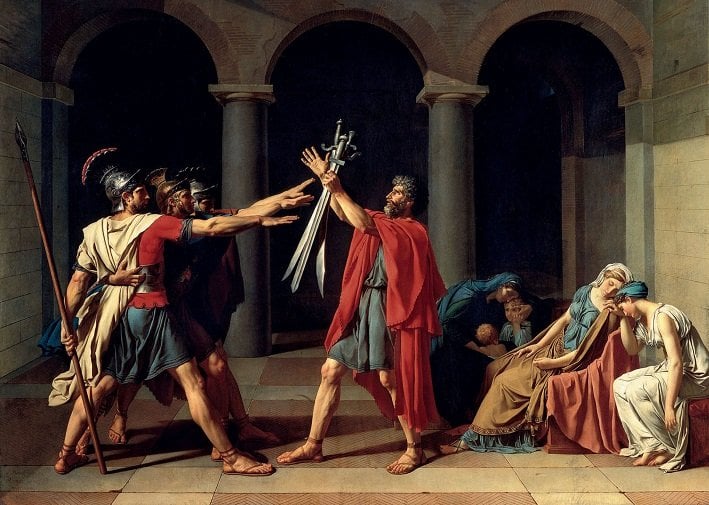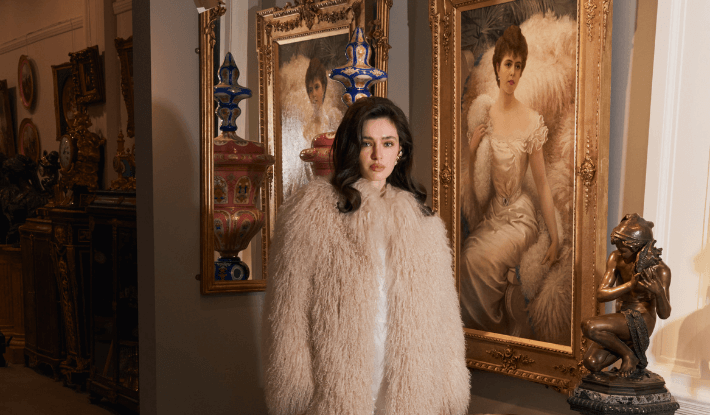What was Neoclassicism and the Neoclassical style?
Neoclassicism, meaning ‘new classicism’ (‘classicus’ means ‘highest’ or ‘best’ in Latin), refers to a movement in the 18th and 19th Centuries which took inspiration from the Classical worlds of ancient Greece (8th to 4th Centuries BC) and Rome (5th to 1st Centuries BC).
The sudden and newfound interest in Classical culture, which was sparked in the 18th Century, was expressed not just in the arts and architecture, but also in literature, philosophy, archaeology, history, music and theatre.
The Neoclassical style is used more generally to describe any piece of art or architecture, from the 18th Century onwards, which takes inspiration from Classical culture: whether that means using motifs and ideas from Classical art, or outright copying it.
Indeed, the Neoclassicists of the 18th Century – artists, sculptors, writers, patrons, intellectuals – were so inspired by the majestic and impressive remnants of Roman and Greek art and culture, which they had seen in Europe, that they set about trying to recreate them.
The following drawing, titled ‘The Artist Moved to Despair at the Grandeur of Antique Fragments’, gives some indication, in all its affected melodrama, of how powerful the idea of Classical antiquity was to the artists of the period.
Henry Fuseli, The Artist Moved to Despair by the Grandeur of Antique Fragments (1778-1779), red chalk on sepia wash. On display at Kunsthaus, Zurich
Although Neoclassicism was, fundamentally, about trying to replicate Classical art, it’s important to remember that, while Neoclassical artists were inspired by the civilisations of Greece and Rome, their reproductions were never truly faithful.
Given that so few examples of Greek and Roman art existed, it’s probably fair to say that the Neoclassicists worked more from an idea of what Classical art was like than what it was actually like.
Neoclassical sculptors, for example, treated the Ancient Greek sculptor Phidias – who lived roughly between 480 and 430 BC – as the father of all sculpture, and revered him as the greatest to have ever lived.
And yet no sculptures by Phidias ever survived. Not one 18th Century sculptor had ever seen a work by Phidias. The sculptures that the Neoclassicists were using as their inspiration were copies, adaptations, even, of sculptures by Phidias.
Neoclassicism emerged to serve an idea – perhaps even a myth – of Classical perfection. From the outset, Neoclassicism was a movement driven as much by idealism as it was by the reality of Classical culture.
When and why did Neoclassicism begin?
The 18th Century was the age of Neoclassicism, but it was by no means the first time in history that European peoples had become interested in Classical antiquity.
Classical revivalism had in fact begun in the Renaissance, some four centuries earlier. ‘Renaissance’ translates as ‘rebirth’: the rebirth of Greece and Rome. Neoclassicists took inspiration from Renaissance artists – so much so that some historians consider Neoclassicism merely a revival of the Renaissance, rather than a revival of the Classics.
Particular inspirations for 18th Century artists were the Renaissance masters Raphael (1483-1520) and Nicolas Poussin (1594-1665), both of whom had made harmony, proportion and symmetry the paramount features of their painting.
Raphael, The School of Athens (1509-1511), fresco in the Apostolic Palace in the Vatican. The picture depicts the philosophers of Ancient Athens, with Plato and Aristotle shown at the centre
So wasn’t Neoclassicism simply a continuation of the Renaissance? What had changed between the Renaissance of the 15th Century and the Neoclassical Age of the 18th?
The answer to this is threefold: The Enlightenment, the Grand Tour, and a man called Johann Joackim Winckelmann.
The Age of Enlightenment and Neoclassicism
The 18th Century Age of Enlightenment in Europe was one of the most significant periods in the entire history of the continent, transforming its philosophy, politics, society and culture. The new emphasis placed on reason and the scientific method led to a whole host of important works of philosophy, scientific advances and new academic disciplines.
Perhaps most importantly, the new science of archaeology had led to the astonishing discovery and excavation, in 1748, of a largely intact Roman town: Pompeii in Italy (as well as nearby Herculaneum) which had been buried after a volcano eruption in 79 AD.
Ruins of Pompeii with Mt Vesuvius shown in the background. © ElfQrin via Wikimedia Commons
The discovery of these towns sent shockwaves through Europe. 18th Century Europeans found out that Roman antiquity was not only far more technologically sophisticated than they thought, but also that their art was far more beautiful than they ever could have imagined.
This also sparked new interest in already-existing Classical sites: books like Ruins of Palmyra (1753) by archaeologists Robert Wood, John Bouverie, and James Dawkins, and Robert Wood’s 1757 Ruins of Balbec, both of which contained engravings of original pieces of Roman art, were enormously influential on the Neoclassicists.
Neoclassicism and the Grand Tour
Some were so inspired by these new sites of Classical antiquity that they took to the Continent to see them themselves. This form of travel around Europe, known as the Grand Tour, became a rite of passage for young aristocratic men in the 18th and 19th Centuries.
The Grand Tourists drove the Neoclassical movement, by bringing back knowledge and souvenirs from their travels, all of which would inspire the creation of artworks made in the Classical style. Some travellers, such as English aristocrat Charles Townley, would build up vast collections of antique objects collected on the Grand Tour.
Many Grand Tourists would also become important patrons of Neoclassical artists, by commissioning them to create artworks similar to those they had seen in Europe.
Winckelmann and Neoclassical philosophy
The year 1755 also saw the publication of another influential book, which, largely based on archaeology, provided the blueprint for the Neoclassical style: German art critic Johann Joackim Winckelmann’s Reflections on the Painting and Sculpture of the Greeks.
In his book, Winckelmann formulated the aesthetic philosophy which was to provide the backbone of the Neoclassical movement: appreciation for harmony, proportion, symmetry – all as expressions of a kind of ideal beauty which could not be found in nature.
Perfection and beauty, he said, originated not in the natural world but in the human mind. The philosophers of ancient Greece, Plato especially, had been the first to articulate this idea. Their way of creating art was therefore the model that all art should follow.
Model of the Apollo Belvedere, Winckelmann's favourite sculpture. The original sculpture was made by Leochares in bronze in the 4th Century BC and lost. There is a famous 2nd Century AD Roman marble copy currently in the Vatican Museums.
This message was especially important in light of the predominant design style in Europe at the time: the playful, asymmetrical, naturally-inspired Rococo style. Neoclassicism in many ways was the opposite of the Rococo, favouring grandeur, simplicity and elegance above ornament and excess.
So Neoclassicism flourished in the 18th Century because archaeology uncovered new Classical sites, the Grand Tour drove more people towards them, and Winckelmann's book gave those people the tools to appreciate them.
Where was Neoclassicism popular?
Although the Classical ruins of Italy and Greece were the main sources of inspiration for the Neoclassicists, they were not the main centres of the new Neoclassical style.
In fact, Greece was hardly visited at all, even by the Grand Tourists: the country was seen as a rough, underdeveloped backwater of Eastern Europe, in quite some contrast to the glory of its ancient past.
Rather, architects and artists in England and France, having been inspired by what they had seen of Rome and Italy, paved the way for the development of the Neoclassical style, in architecture, interiors, decorative arts and painting.
Neoclassicism's spread was at least partly a result of how fashionable London and Paris had become in the 18th Century, and these two major European cities became centres for the Neoclassical style.
With time the style gradually spread eastward across Europe. In Germany, for example, the city of Munich built extensively in the Neoclassical style.
Meanwhile, the Russian Empire, was undergoing a period of 'Westernisation' - that is, trying to appear more like England and France - and so naturally adopted the architectural style most popular in Western Europe at the time. Indeed, 18th Century Russia embraced Neoclassicism like nowhere else, going so far as to build an entire city - the new capital of St Petersburg - in the style.
And Neoclassicism's effect was so profound in Europe that, eventually, it spread to the rest of the world, becoming a truly global movement. Regions of the world which were redeveloped in the new style included Latin America (then under Spanish rule), new settler colonies in Australia and New Zealand, and the USA, having gained its independence in the late 18th Century.
What did the Neoclassical style look like?
Like the Classical art it was trying to emulate, Neoclassicism can be loosely defined by its focus on harmony, simplicity, proportion and symmetry. This applied not only to art and design, but to literature, music and theatre – all of which in some way came to be influenced by Neoclassicism in this period.
Gone were the decorative scrolls and frills of the Baroque and Rococo periods which preceded it: Neoclassicism was about clean, straight lines, simple, geometric motifs, and plain, block colours.
Where Baroque and Rococo architecture was about sculptural ornamentation, chiaroscuro, and trompe l’oeil effects, Neoclassical buildings featured long, blank walls and flat roofs. Portico, colonnade, capital, frieze are all words we now associate with Neoclassical architecture.
The distinctive feature of Neoclassical architecture was its use of Classical orders, that is, different types of columns which support the structure. These were, of course, based on examples taken from surviving Roman and Greek buildings. Traditionally there were thought to be three orders: Doric, Ionic, and Corinthian, all taken from Greek architecture.
Diagram detailing the Classical orders, including later Roman versions. © Edwardtbabinski via Wikimedia Commons
These features of Neoclassical architecture also greatly influenced Neoclassical decorative arts, interiors, and furniture. It was not uncommon, for example, to see Neoclassical furniture making use of columns, frieze panels and sculptural reliefs.
That Neoclassical furniture makers were more inspired by ancient architecture than by ancient furniture was an important element of Neoclassical design: rather than copying Classical design directly, Neoclassical designers borrowed ideas and stylistic features from different media.
So Neoclassical metalworkers borrowed from Classical pottery, Neoclassical ceramicists borrowed from Classical sculpture, and so on.
That said, furniture, decorative arts and interiors did share a common vocabulary of shapes, motifs and materials which were taken directly from Classical antiquities.
These motifs included: swags and festoons; laurel wreaths; Classical masks; mythological and real creatures including dolphins, lions, sphinxes, griffins, satyrs, and bulls (known as bucrania); medallions; arabesques; and beads.
Classical subjects - gods, myths, heroes, literary characters and so on - were also important elements of Neoclassical design.
Detail from a Neoclassical style porcelain vase. Note the Classical mask, arabesque and laurel wreath motifs.
If you see any of these features on an antique object, it’s likely that it was made in the Neoclassical style.
What was Neoclassicism's influence on architecture?
Of all the art forms, Neoclassicism had the greatest and most long-lasting impact on architecture. Indeed, many of the most important buildings across the world, built since the 18th Century, have been constructed in the Neoclassical style. These include museums, galleries, theatres, university buildings, and important state buildings.
Neoclassicism was associated with the highest order of civic, or public, architecture. It implied grandeur, seriousness and power.
Archaeological discovery, again, provided the main inspiration for Neoclassical architects.
In addition, Neoclassicists used the work of the 1st Century BC Roman architect Vitruvius as a guide, which is why Neoclassical architecture is sometimes called ‘Vitruvian architecture’. Neoclassicists saw his ideas about proportion and symmetry at work in many of the ancient ruins discovered over the course of the 18th Century.
Again, while they were influenced by Classical architecture, Neoclassical architects were also influenced by Renaissance interpretations of Classical architecture. Particularly important here was the Italian Renaissance architect Andrea Palladio (1508-1580).
Neoclassical architecture is traditionally thought to have developed in two phases: first was the Palladian period, from roughly 1700-1750, so called because it was directly inspired by Palladio’s designs. It was spearheaded by the British architects Inigo Jones and Colen Campbell. London’s Chiswick House is perhaps the most famous example of this style.
Front view of Chiswick House, London, one of the best-known examples of Palladian, or Neo-Palladian architecture. © Patche99z via Wikimedia Commons
Then, from 1750, we see ‘High Neoclassicism’, or often simply Neoclassicism. It differed from Palladianism in that, instead of being Roman in style, it incorporated features taken from Greek buildings as well.
Examples of Neoclassical architecture built during the 18th Century are too numerous to list, but there are nevertheless a number of stand-out examples.
Perhaps the most impressive monument to Neoclassical architecture was the city of St Petersburg. Under the direction of its 18th Century ruler, Catherine the Great, St Petersburg acquired many new vast and grand buildings built in the Neoclassical style.
The Hermitage Museum on the banks of the River Neva, for example, utilises all the classic features of Neoclassical architecture: Ionic order, minimal use of ornamentation, and straight lines.
The Palace Square Facade of the Winter Palace in St Petersburg, part of the Hermitage Museum complex. © Michael Clarke via Wikimedia Commons
In France, one of the finest and first Neoclassical buildings was the Church of Saint-Genevieve designed by Jacques Germain Soufflot. Now known as the Panthéon, it is particularly noticeable for its front portico, or colonnade entrance – a classic feature of Roman and Greek temples.
In Britain, several architects working in the Neoclassical style rose to prominence during the 18th Century. Inigo Jones’ Somerset House on the Strand in London, for example, was redesigned by the architect William Chambers in the Neoclassical style.
Perhaps the most famous British Neoclassical architects, however, were Robert Adam and James ‘Athenian’ Stuart. Stuart’s 1762 book Antiquities of Athens, again based on archaeological discovery, was a seminal work in bringing the design concepts of Greece to Britain.
Robert Adam was best known for his contribution to the design of Edinburgh’s New Town, and for the designs of Kenwood House and Osterley Park in London.
Osterley Park in West London, designed by Robert Adam. © Jim Linwood via Wikimedia Commons
Adam’s style was especially innovative for integrating interior and exterior design into one, total concept: many of the houses he designed were also filled with his furniture.
Other important Neoclassical structures built during the 18th Century include London’s Bank of England, designed by John Soane and, of course, The White House in Washington DC.
The White House in Washington D.C., home of the President of the USA. © Cezary p via Wikimedia Commons
What was the influence of the Neoclassical style on interiors and decorative arts?
Interiors of Neoclassical buildings were often inspired by actual Classical interiors found in archaeological sites. In addition, many Neoclassical decorative pieces were modelled on real ‘antiquities’ collected on the continent during the Grand Tour.
Of all the decorative objects produced in the period, vases were by far the most popular and important. Having been found in huge quantities at many archaeological sites, vases in many ways came to symbolise Classical antiquity.
One of the most famous Neoclassical model of vase of the 18th Century was that based on the famous Roman urn known as the Portland Vase. Replicas were made by the celebrated British potter Josiah Wedgwood, whose company, Wedgwood, became one of the most important makers of Neoclassical ceramics of the 18th and 19th Centuries in Britain.
Wedgwood's famous jasperware copies of the Portland Vase. © Sean Pathasema/Birmingham Museum of Art via Wikimedia Commons
Indeed, most vases produced in the 18th and 19th Centuries in Europe had shapes based on Greek and Roman vases.
Although Neoclassical decorative objects borrowed shapes and motifs from Classical antiquity, they used contemporary materials, including porcelain and ormolu, both of which had become popular during the 17th and 18th Centuries. Silver was another popular medium used by Neoclassical makers in the decorative arts.
What was the Neoclassical influence on furniture?
The biggest influence on furniture made in the Neoclassical style was not ancient Greek and Roman furniture, but rather the architecture of the ancient civilisations. Neoclassical style furniture used Classical columns as supports, friezes with sculpted relief panels and, of course, straight lines, symmetry and proportion.
In France, generally recognised as the furniture capital of the world in the 18th Century, Neoclassical furniture went through two distinct phases.
The first, now known as 'Louis XVI' style, after King Louis XVI who reigned between 1774 and 1791, was epitomised by the sleek, simple, but beautiful designs of Jean-Henri Riesener (1734-1806) and David Roentgen (1743-1807), Queen Marie Antoinette’s favourite makers.
The second is now known as the 'Empire' style, and coincided with the reign of Napoleon I, who ruled between 1800 and 1814. It was similar in style to Louis XVI furniture but was distinctive for using more ornate, florid ormolu mounts. The use of winged figures as supports was also a particularly distinctive feature of the style.
Desk by Jean-Henri Riesener for Queen Marie Antoinette, now in the Chateau de Versailles. The straight, tapered table legs are reminiscent of Classical-style architectural columns and a staple feature of Louis XVI style furniture. © Myrabella via Wikimedia Commons
Although France was in many ways the centre of Neoclassical style furniture, its influence could be felt in other parts of Europe too: the influential Biedermeier style, for example, was directly inspired by the simplicity of the French Empire style, and reigned as the predominant interior design style in Germany, Austria-Hungary and Scandanavia in the first half of the 19th Century.
The Biedermeier style came to embody the Neoclassical aesthetic in the 19th Century: utilitarian, simple, elegant and disdainful of frills and ornamentation.
In England, Neoclassical style furniture was the preserve of the so called 'big three' English furniture makers in the late 18th Century: Thomas Chippendale, Thomas Sheraton and George Hepplewhite.
Sheraton and Chippendale in particular made a conscious move towards Neoclassical designs towards the end of their careers, having earlier specialised in Georgian and 'English Rococo' style furnishings.
What was Neoclassical sculpture like?
Archaeological finds in the 18th Century unearthed many examples of Roman and Greek sculpture, which provided inspiration for artists working in the period.
The two figureheads of Neoclassical sculpture were Antonio Canova (Italian, 1757-1822) and Bertel Thorvaldsen (Danish, 1770-1844). Both were based in Rome at around the same time, both attracted rich patrons through the Grand Tour, and both worked mostly in marble.
The two sculptors made a name for themselves by depicting Classical mythological subject matter, such as in Canova’s Psyche revived by Cupid’s Kiss, now in the Louvre in Paris, and Thorvaldsen’s Jason with the Golden Fleece, now housed in the Thorvaldsen Museum in Cophenhagen.
Antonio Canova's Psyche Revived by Cupid's Kiss, on display at the Louvre Museum, Paris. © gadgetdude via Wikimedia Commons
Another important Neoclassical sculptor was Jean-Antoine Houdon (1741-1828), who was particularly famous for his portrait busts of important philosophers and thinkers of the 18th Century. These included Jean-Jacques Rousseau, Voltaire, George Washington, Benjamin Franklin and even Napoleon Bonaparte. He modelled their busts to appear similar to great Roman leaders.
In Britain, John Flaxman achieved fame as a Neoclassical sculptor, and was best known for being employed as a modeller by the celebrated British potter Josiah Wedgwood.
What was Neoclassicism’s influence on painting?
Neoclassical painting was perhaps the least ‘Classical’ of all the art forms. Given that hardly any examples of Classical painting existed, artists instead tended to rely on the Renaissance painter Raphael (1483-1520) as their main source of inspiration.
Raphael’s painting was considered – by Winckelmann among others – the closest in form to the Classical ideals of harmony, beauty and proportion. These were the defining principles of Neoclassical painting, as well as immobility (in contrast to the movement so characteristic of Baroque painting).
Important painters inspired by Raphael included Anton Raphael Mengs (1728-1779), a friend of Winckelmann’s, Swiss artist Angelica Kauffman (1741-1807) and portraitists Joshua Reynolds (1723-1792) and Jean-Baptiste Greuze (1725-1805).
Anton Raphael Mengs, Parnasus, completed 1760s. This is a painting intended as a model for Meng's fresco in the Villa Albani in Rome.
Danish painter Asmus Jacob Carstens (1754-1798) was one of the most committed Neoclassicist painters and was inspired by Raphael’s pupil Guilio Romano (1499-1546), whose paintings he had seen on his Grand Tour.
But by far the most famous and celebrated painter of the Neoclassical period was one of its last: Jacques-Louis David. David's monumental painting, the Oath of the Horatii, is widley considered a masterpiece of Neoclassicism. The painting depicts a scene from Roman legend, and employs many of the fundamental techniques of Neoclassical painting.
David's Oath of the Horatii (1784), currently on display in the Louvre, Paris
David’s pupil Antoine-Jean Gros (1771-1824) also achieved critical success as a Neoclassical painter. He was most famous for his portrait of Napoleon Bonaparte which was completed in 1796.
When and why did Neoclassicism end?
By the early 19th Century, a new artistic style known as Romanticism was beginning to take shape in Europe. It was accompanied by Neo-Gothic architecture, which favoured a return to the styles of the Middle Ages, rather than to antiquity.
With the rise of Romanticism, which emphasised individuality and glorified nature, the Classical ideal of beauty and perfection, so dominant for the second half of the 18th Century, was no longer the abiding philosophy of art.
Although it fell out of fashion around the start of the 19th Century, Neoclassicism never really ended.
Instead, it simply found expressions in new artistic movements in the 19th Century and beyond: academicism, Beaux-Arts architecture, the Neo-Grec movement. There were even Neoclassical ‘revivals’ throughout the 19th and 20th Centuries, such as in Russia between 1905 and 1914.
So called ‘Academic’ painters such as William-Adolphe Bouguereau (1825-1905) and Jean-Leon Gerome (1824-1904) cited Neoclassicism as their main source of inspiration.
In furniture and decorative arts, Neoclassical style pieces remained enormously popular throughout the 19th and 20th Centuries. Even the popular 20th Century Art Deco style used many Neoclassical motifs in its works.
What is Neoclassicism’s influence on us today?
Neoclassicism continues to be revived today: in the New Classical Architecture movement, for example, which attempts to reclaim beauty in architecture, from what its proponents see as the sterility and brutality of Modernism.
The simplicity, symmetry and proportion characteristic of Neoclassicism can all also be felt in other art forms, including music, ballet and even clothing.
But Neoclassicism was always about more than the arts. It is about our continued cultural fascination with the civilisations of ancient Greece and Rome.
This fascination is evidenced by the fact so many of the most important buildings in European cities - government buildlings, museums, major libraries, universities, opera houses, theatres and so on - are built in the Neoclassical style. Neoclassicism is a movement which we have come to associate with the highest functions of state and society.
As long as we continue to be amazed by these major buildings, as long as we continue to visit ancient ruins, and as long as we tell our children stories based on Classical myths and legends, we remain indebted to the vast legacy of Neoclassicism.




